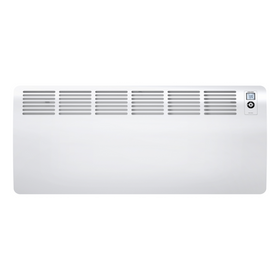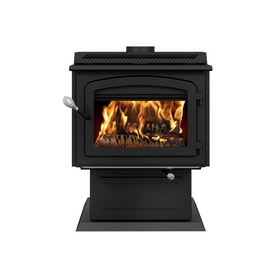
Window Shades: Everything You Need to Know
Last Updated: Mar 17, 2025Most people might assume that window shades or window treatments are an essential part of keeping your home comfortably cool in the middle of the summer. Why then are we writing about the best window shades in the middle of winter?
Window shades, shutters, blinds, curtains, and others add a unique aesthetic to your windows' exterior and interior surfaces. They also play an essential role in improving your home's energy efficiency and thermal performance. Those thick, energy-efficiency drapes not only keep the hot sun from overheating your house in July but can also help to lower your heating bills in the middle of January. Below, Rise takes an in-depth look at the best window treatments available for homeowners. We explain the fundamental differences between different types of window treatments to help you determine which types of window treatments can add energy efficiency to your home.
Table of Contents
- What Are The Different Types of Window Treatments?
- What Are Examples of Hard Window Treatments?
- Curtains: What to Look For?
- Blinds and Shades: What to Look For?
- Window Tinting: What to Look For?
- Window Awnings: What to Look For?
- Smart Window Shades: What to Look For?
- Which Shades Are Most Sustainable?

What Are The Different Types of Window Treatments?
Do you know the difference between window blinds and window shades? Window treatments are defined as any cover or modification to a window to improve the aesthetic quality or better control light and temperature inside the room or home.
Generally, window treatments are divided into two categories: hard treatments and soft treatments. Hard treatments refer to window accessories made from "hard" materials such as wood, vinyl, or aluminum installed to either the interior or exterior of a windowed façade. Soft treatments refer to more delicate materials made from fabric or textiles such as curtains or drapery.
What Are Examples of Hard Window Treatments?
Examples of hard treatments for windows include:
- Shutters: These window treatments include window shutters installed on the exterior part of the window.
- Blinds: These treatments come with louvers and horizontal slats, which allow homeowners to either allow or block light without actually lifting the shade. Window blinds are generally made from hard materials such as wood, bamboo, or hard plastics and allow for customized natural lighting.
- Shades: These window treatments are manufactured from a fabric that rolls, stacks, or folds. In general, window shades need to be raised to allow light (and heat) to enter the home.
Now that we know the fundamental differences between the different types of hard and soft window treatments let's turn our attention to the characteristics to look for when focusing on energy-efficiency and sustainability.

Curtains: What to Look For?
To stay cool during the summer months, many people rely on turning up the air conditioner. However, most unwanted heat gain occurs due to poorly placed windows that allow significant amounts of radiation and heat from the afternoon sun. Even a simple curtain can block some of that sun and unwanted heat to reduce your cooling needs during the summer.
However, the most energy-efficient curtains can also play a role in keeping heat inside your home during the cooler winter months. Energy-efficient curtains, generally made from thick fabric, are long enough to touch the floor and do not leave any spaces around the edges of the window. Some "thermal curtains" even come with a reflective backing to actively reflect unwanted heat and light out the window. According to one manufacturer, thermal curtains might reduce unwanted heat gain during the summer by up to 33 percent.

When shopping for the best curtains for energy efficiency purposes, prioritize those products made with at least two layers and include triple woven fabric. Blackout technology can also help trap heat inside your home during the winter and keep light and heat out during the summer. Perhaps you don't want to change your existing curtains completely. In that case, blackout curtain liners are easy-to-install, detachable linings that you attach to any curtain or a separate rail.

There are hundreds of different companies offering thermal curtains for your home. These products not only improve the energy efficiency around your windows but can also add a light filtering and decorative touch to your home interior. Very affordable options by Best Home Fashion claim to block 99.9 percent of unwanted light from entering your home. Other options are made with thick cotton fabric (for a higher price) if you prefer to opt for natural fibers.

Blinds and Shades: What to Look For?
One of the nice things about window blinds and shades is that there is generally a wide variety of products made from natural products. For example, Home Depot has an impressive variety of window blinds made from bamboo, which, when sourced responsibly, is a great sustainable building material.
Shop All Special Offers
Shop Special Offers on vetted Home Improvement products at low prices while supplies last.

Stiebel Eltron CON 300-2 Premium Wall-Mounted Convection Heater - 202030
Stiebel Eltron
In Stock

Stiebel Eltron Accelera 300 E Heat Pump Water Heater
Stiebel Eltron
In Stock

Drolet HT-3000 Wood Burning Stove DB07300
Drolet
In Stock

Victory Range Hood Sunset 600 CFM White Flush Ceiling Mount Dimmable LED Range Hood
Victory Range Hoods
In Stock

Stiebel Eltron DHC-E 8/10-2 Plus Point-of-Use Electric Tankless Water Heater - 202145
Stiebel Eltron
In Stock

Stiebel Eltron CON 150-1 Premium Wall-Mounted Convection Heater - 202026
Stiebel Eltron
In Stock

Stiebel Eltron Accelera 220 E Heat Pump Water Heater
Stiebel Eltron
In Stock

Victory Range Hood Sunset 600 CFM Flush Ceiling Mount Dimmable LED Range Hood
Victory Range Hoods
In Stock

Innovative Dehumidifier IW25-5 In-Wall Dehumidifier
Innovative Dehumidifier
In Stock

Drolet Bistro Wood Burning Cookstove DB04815
Drolet
In Stock

Smart Window Shades: What to Look For?
Smart home technology is continuing to develop new and innovative strategies to help homeowners improve their homes' energy efficiency. Smart shades and smart blinds are a type of window treatment that includes built-in motors. These motors let homeowners remotely raise/open or lower/close the shades or blinds based on different schedules. Homeowners can program these smart shades to open and close on a given schedule automatically or controlled via a dedicated app on your smartphone.
Smart shades are significantly more expensive than some of the other window treatments discussed above, as they will most likely cost you somewhere between $300 and $500. Because of the added cost, it is best to install smart shades or blinds in large, south-facing windows where your home suffers from the most unwanted heat gain during the summer. Make sure to look for smart shades or blinds that include a feature wherein the blinds automatically close when the temperature in the house reaches a certain level. This feature will most likely offer the best thermal performance and thus help drive down your energy bills.
Tobias Roberts
Tobias runs an agroecology farm and a natural building collective in the mountains of El Salvador. He specializes in earthen construction methods and uses permaculture design methods to integrate structures into the sustainability of the landscape.






